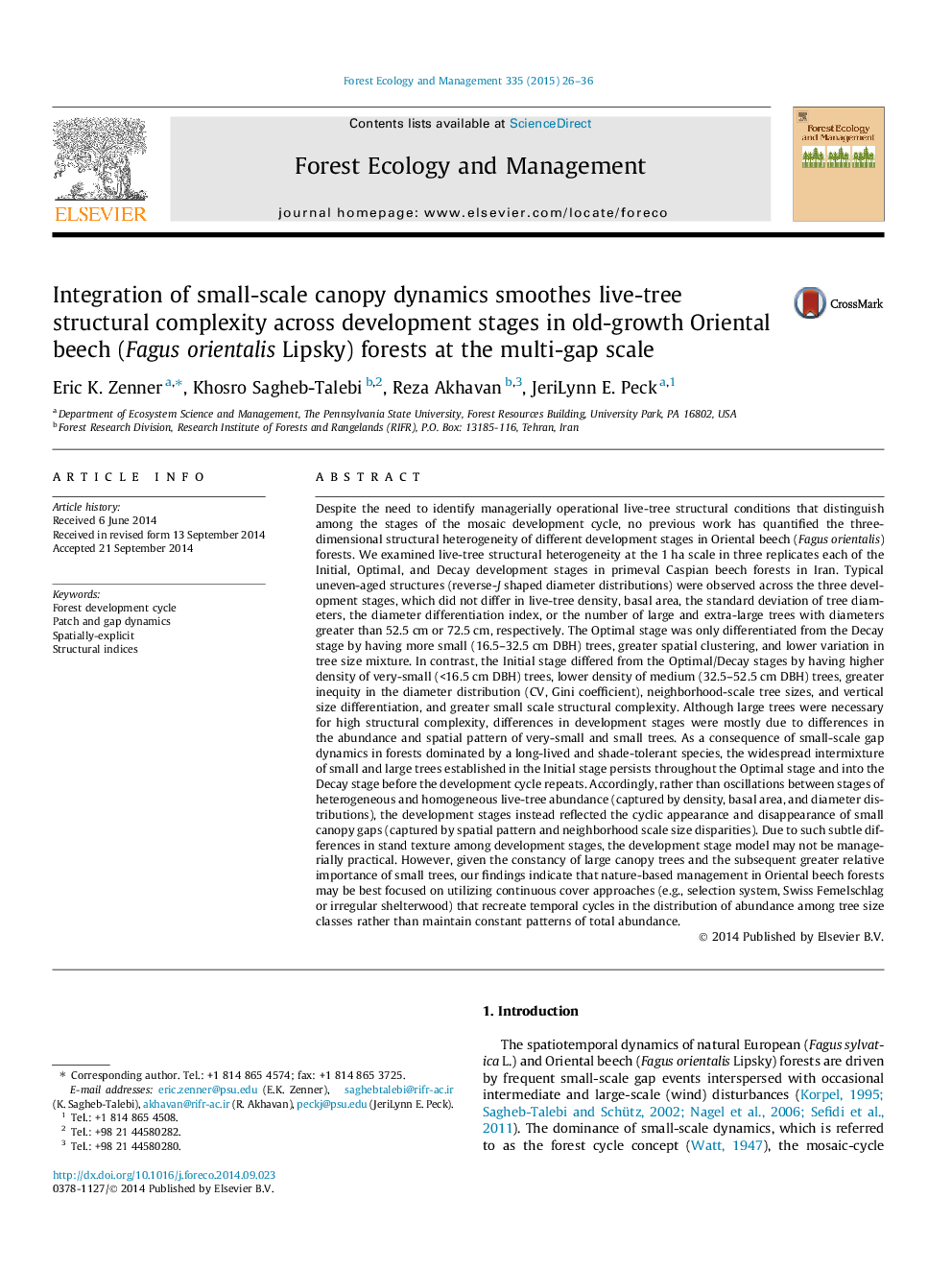| کد مقاله | کد نشریه | سال انتشار | مقاله انگلیسی | نسخه تمام متن |
|---|---|---|---|---|
| 6542951 | 159192 | 2015 | 11 صفحه PDF | دانلود رایگان |
عنوان انگلیسی مقاله ISI
Integration of small-scale canopy dynamics smoothes live-tree structural complexity across development stages in old-growth Oriental beech (Fagus orientalis Lipsky) forests at the multi-gap scale
دانلود مقاله + سفارش ترجمه
دانلود مقاله ISI انگلیسی
رایگان برای ایرانیان
موضوعات مرتبط
علوم زیستی و بیوفناوری
علوم کشاورزی و بیولوژیک
بوم شناسی، تکامل، رفتار و سامانه شناسی
پیش نمایش صفحه اول مقاله

چکیده انگلیسی
Despite the need to identify managerially operational live-tree structural conditions that distinguish among the stages of the mosaic development cycle, no previous work has quantified the three-dimensional structural heterogeneity of different development stages in Oriental beech (Fagus orientalis) forests. We examined live-tree structural heterogeneity at the 1Â ha scale in three replicates each of the Initial, Optimal, and Decay development stages in primeval Caspian beech forests in Iran. Typical uneven-aged structures (reverse-J shaped diameter distributions) were observed across the three development stages, which did not differ in live-tree density, basal area, the standard deviation of tree diameters, the diameter differentiation index, or the number of large and extra-large trees with diameters greater than 52.5Â cm or 72.5Â cm, respectively. The Optimal stage was only differentiated from the Decay stage by having more small (16.5-32.5Â cm DBH) trees, greater spatial clustering, and lower variation in tree size mixture. In contrast, the Initial stage differed from the Optimal/Decay stages by having higher density of very-small (<16.5Â cm DBH) trees, lower density of medium (32.5-52.5Â cm DBH) trees, greater inequity in the diameter distribution (CV, Gini coefficient), neighborhood-scale tree sizes, and vertical size differentiation, and greater small scale structural complexity. Although large trees were necessary for high structural complexity, differences in development stages were mostly due to differences in the abundance and spatial pattern of very-small and small trees. As a consequence of small-scale gap dynamics in forests dominated by a long-lived and shade-tolerant species, the widespread intermixture of small and large trees established in the Initial stage persists throughout the Optimal stage and into the Decay stage before the development cycle repeats. Accordingly, rather than oscillations between stages of heterogeneous and homogeneous live-tree abundance (captured by density, basal area, and diameter distributions), the development stages instead reflected the cyclic appearance and disappearance of small canopy gaps (captured by spatial pattern and neighborhood scale size disparities). Due to such subtle differences in stand texture among development stages, the development stage model may not be managerially practical. However, given the constancy of large canopy trees and the subsequent greater relative importance of small trees, our findings indicate that nature-based management in Oriental beech forests may be best focused on utilizing continuous cover approaches (e.g., selection system, Swiss Femelschlag or irregular shelterwood) that recreate temporal cycles in the distribution of abundance among tree size classes rather than maintain constant patterns of total abundance.
ناشر
Database: Elsevier - ScienceDirect (ساینس دایرکت)
Journal: Forest Ecology and Management - Volume 335, 1 January 2015, Pages 26-36
Journal: Forest Ecology and Management - Volume 335, 1 January 2015, Pages 26-36
نویسندگان
Eric K. Zenner, Khosro Sagheb-Talebi, Reza Akhavan, JeriLynn E. Peck,